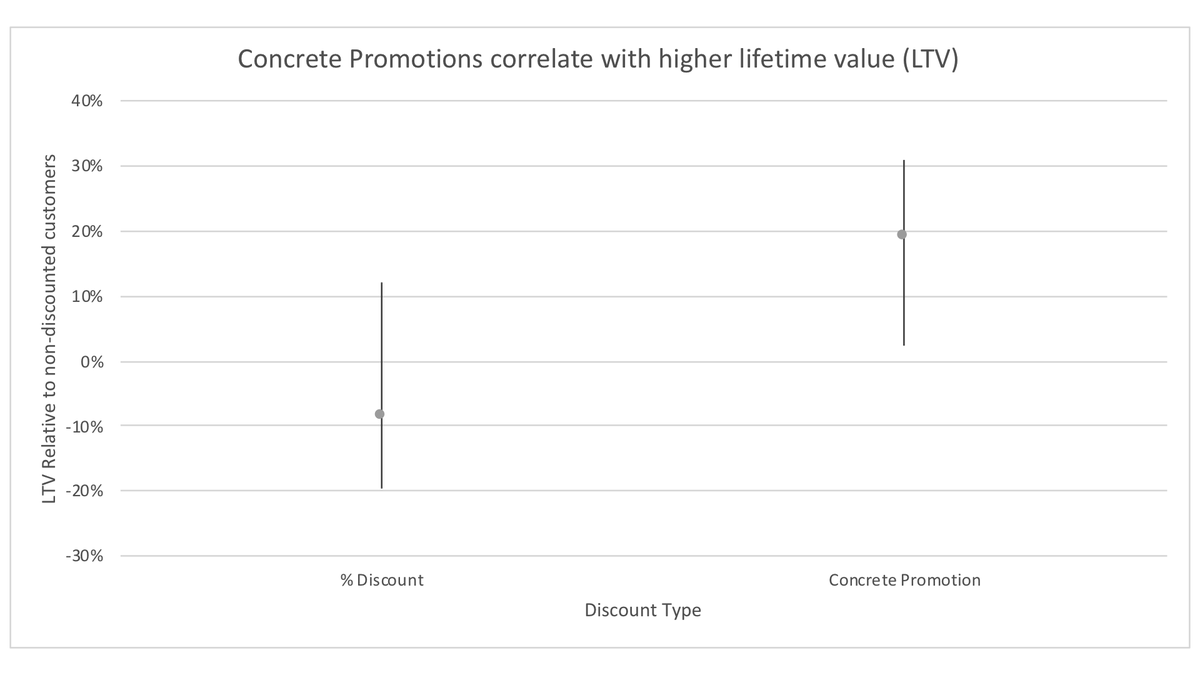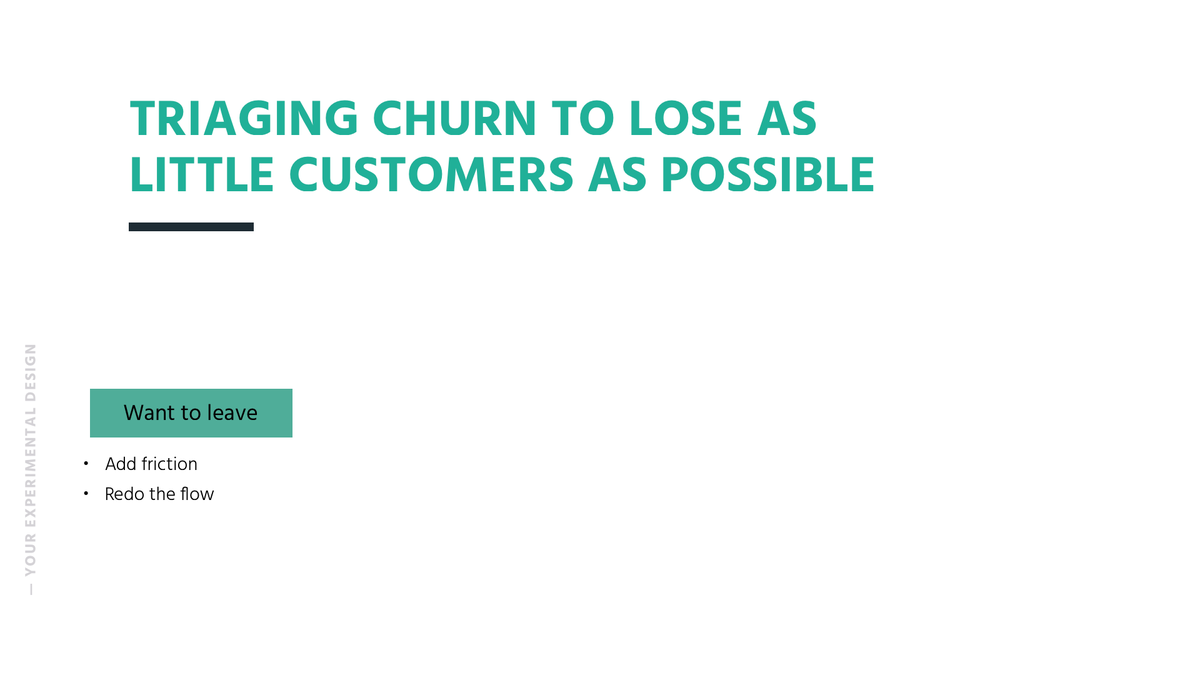
Interesting discussion from @andrewjfaris, @TaylorHoliday, and @digitallynativ around discounts on #DTC Twitter.
Found the conclusion of "discounts are a scalpel, not a sledgehammer" right, but incomplete.
Here's some data from 4.2k sub ecom brands to help with the thinking.👇
Found the conclusion of "discounts are a scalpel, not a sledgehammer" right, but incomplete.
Here's some data from 4.2k sub ecom brands to help with the thinking.👇
First - why discount?
Discounts lower the activation energy of a lead converting.
As Taylor mentioned, a promotion can diminish the trust gap, reframing the purchasing decision.
Where I quibble is with the depth of these discounts. 2/
Discounts lower the activation energy of a lead converting.
As Taylor mentioned, a promotion can diminish the trust gap, reframing the purchasing decision.
Where I quibble is with the depth of these discounts. 2/
Let's look at lifetime value (LTV) across 4.2k sub ecom companies, specifically the LTV of customers who received a discount at purchase compares to those who didn't.
Notice how as the discount increases, LTV decreases.
Why? 3/
Notice how as the discount increases, LTV decreases.
Why? 3/

Our thesis becomes: discounts leap the trust gap, but at a level the trust gap actually *widens* by the discount.
You'll get initial conversion, but not so great customers.
You could argue - more customers are better than less. Yet, here's why that's maybe not great... 4/
You'll get initial conversion, but not so great customers.
You could argue - more customers are better than less. Yet, here's why that's maybe not great... 4/
Look at NPS scores on our same scale.
Higher the discount, lower the promotion and WOM.
Maybe promotion doesn't matter, but less satisfied customers also churn like mofos.... 5/
Higher the discount, lower the promotion and WOM.
Maybe promotion doesn't matter, but less satisfied customers also churn like mofos.... 5/

Look at revenue churn based on discount at purchase.
Higher the discount, worse the churn.
It's hard to say whether this is ok or not. If I'm a brand like DSC that doesn't make money on first purchase this is problematic. If I was @soundslikecanoe this is probably ok. 6/
Higher the discount, worse the churn.
It's hard to say whether this is ok or not. If I'm a brand like DSC that doesn't make money on first purchase this is problematic. If I was @soundslikecanoe this is probably ok. 6/

There's an argument that discounting leads to new channels of new customers.
If you're expanding into an outlet model, this makes sense, but that's not discounting, that's merchandising mix targeting different customers.
Your core doesn't change, so this feels tangential. 7/
If you're expanding into an outlet model, this makes sense, but that's not discounting, that's merchandising mix targeting different customers.
Your core doesn't change, so this feels tangential. 7/
That being said - here's a curious data point.
When we look at our LTV split, bundling discounts work better than % discounts. Ie. offering a free gift with purchase vs. 20% off.
Bundles appear to correlate with increased LTV.
It's the deal, not the discount. 8/
When we look at our LTV split, bundling discounts work better than % discounts. Ie. offering a free gift with purchase vs. 20% off.
Bundles appear to correlate with increased LTV.
It's the deal, not the discount. 8/

So TLDR:
Discounting is more acquisition than pricing. It's a scalpel, not a sledgehammer that needs to be experimented with and executed well.
Results will vary, but:
- Offer promotions vs. % off.
- Be careful over 20%
- Don't do it out of pressure.
9/
Discounting is more acquisition than pricing. It's a scalpel, not a sledgehammer that needs to be experimented with and executed well.
Results will vary, but:
- Offer promotions vs. % off.
- Be careful over 20%
- Don't do it out of pressure.
9/
@TaylorHoliday, @andrewjfaris, and @digitallynativ hope this helps. Just wanted to add some good kindling to your arguments. 😂
Figure @web and @magdalenakala will get a kick out of this too, so tagging them.
Happy to dig deeper or chat more, too. 10/
Figure @web and @magdalenakala will get a kick out of this too, so tagging them.
Happy to dig deeper or chat more, too. 10/
If you found this worth at least $1, you should retweet the whole thread. Want to get this knowledge into the hands of as many people as possible.
What other benchmarks or research would you like next? I can do a #B2B version of this easily. :)
/fin
What other benchmarks or research would you like next? I can do a #B2B version of this easily. :)
/fin
• • •
Missing some Tweet in this thread? You can try to
force a refresh









